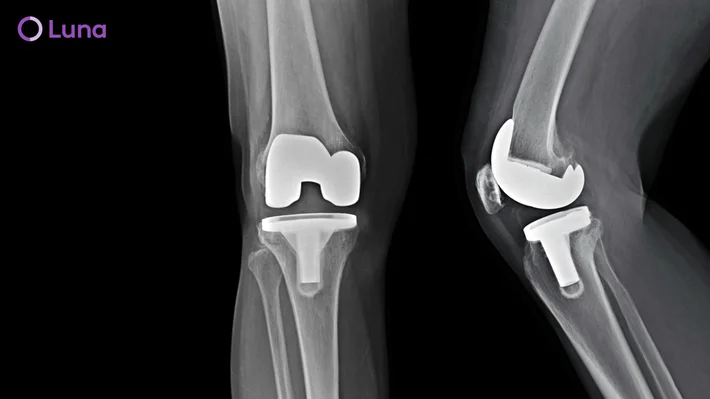If you have knee pain due to osteoarthritis or a similar condition, your doctor
may recommend knee replacement surgery, also known as knee arthroplasty.
You may worry about undergoing such a procedure, however, and ask questions like: How painful will it be? What will recovery be like? How safe is it?
There’s good news. Knee replacement is one of the most effective orthopedic surgeries, and many patients wonder why they waited. “Everything has turned out absolutely fabulous,” says Pat Wyke, a knee replacement patient. “Since my first total knee which was eight years ago, I’ve done three half-marathons, I’ve done a triathlon, and I do the
Columbia Tower stair climb every year.”
This Is Not Your Mother’s Full Knee Replacement
Knee replacement surgery involves replacing the joint surfaces where the cartilage has been damaged with metal and plastic components. “The amount of bone removed in a knee replacement procedure is typically only about 9-10mm,” notes Dr. Robin Fuchs, an orthopedic surgeon specializing in outpatient knee and hip replacement.
For the majority of patients, knee replacement involves replacing the total joint. Minimally invasive surgical techniques make
knee replacement surgery less painful and have a faster recovery time. The surgeon can perform the procedure through a smaller incision while causing less muscle damage. In addition, the use of computer-guided navigation and custom, patient-specific instruments enable precise alignment of your knee, which may reduce wear and tear and lead to a longer-lasting
replacement. Often, surgery can be performed on an outpatient basis, and patients may be mobile with the aid of a walker only hours after the procedure.
The Miracle of MAKOplasty
You may qualify for partial knee replacement if the damage to your knee is localized and the disease is not too widespread—about 12% to 15% of osteoarthritis patients, according to Dr. Fuchs. As the name suggests, this procedure involves replacing only
the damaged side of the joint with artificial knee components.
A highly effective option for partial knee replacement is called MAKOplasty® Partial Knee Resurfacing,
which may be ideal for adult patients with early to mid-stage osteoarthritis that has not affected all three compartments of the knee. MAKOplasty uses robotics technology to resurface the diseased portion of the knee while protecting the healthy bone
and surrounding tissue. Surgeons can then place an implant in the joint so the knee can move smoothly again.
MAKOplasty is powered by the RIO® Robotic Arm Interactive Orthopedic System. According to Providence Health and Services,
“During surgery, the RIO provides the surgeon with real-time visual, tactile and auditory feedback to facilitate optimal joint resurfacing and implant positioning. It is this optimal placement that can result in more natural knee motion following
surgery.”
New Moves with Your New Knee
Unless you’re doing outpatient surgery, your hospital visit will last about two days. Physical therapy is critical to your recovery and
begins right after your surgery. Plan on at least two months of treatment with your PT. Dr. Fuchs notes, “You should expect continued improvement after a knee replacement for six to twelve months, although the majority of the improvement occurs in
the first two months.”
So, if you’re facing knee replacement surgery, don’t panic. Today’s medical technology helps minimize pain, speeds recovery and gets you back in motion. And on-demand physical therapy can
help accelerate the healing process.









